When we left at the end of the previous episode, we’d just started assembling the front parts and the hanging tabs. The errata found that I’d misread the German, while it was early enough to do something about it.
I think we should all view this update as a learning experience, or several. Attaching the back was the same as attaching the lower front piece. The stitches go from the skin side on the back, out the edge, through both layers of the piping, through the edge of the front and out the skin side. Repeat as desired. I found as I went that the quiver tightened on the wooden core. Wrapping the core in unwaxed kitchen paper provided a low-friction layer and stopped the leather from getting stuck.
So on to our first disaster. It’s 35 degrees C inside, I’m sweating like the proverbial and I’m stitching with steel needles, pulling them through the leather layers with a pair of 19th century steel lasting pliers and my stupidly salty sweat starts pulling iron ions from the tools and transferring them to the leather, where they react to form perfect, black stained ferric tannate fingerprints.

SONY DSC

SONY DSC
The wisdom of the Internet suggested juice from a lemon as a good way of removing the stains, and the results were even better than advertised.
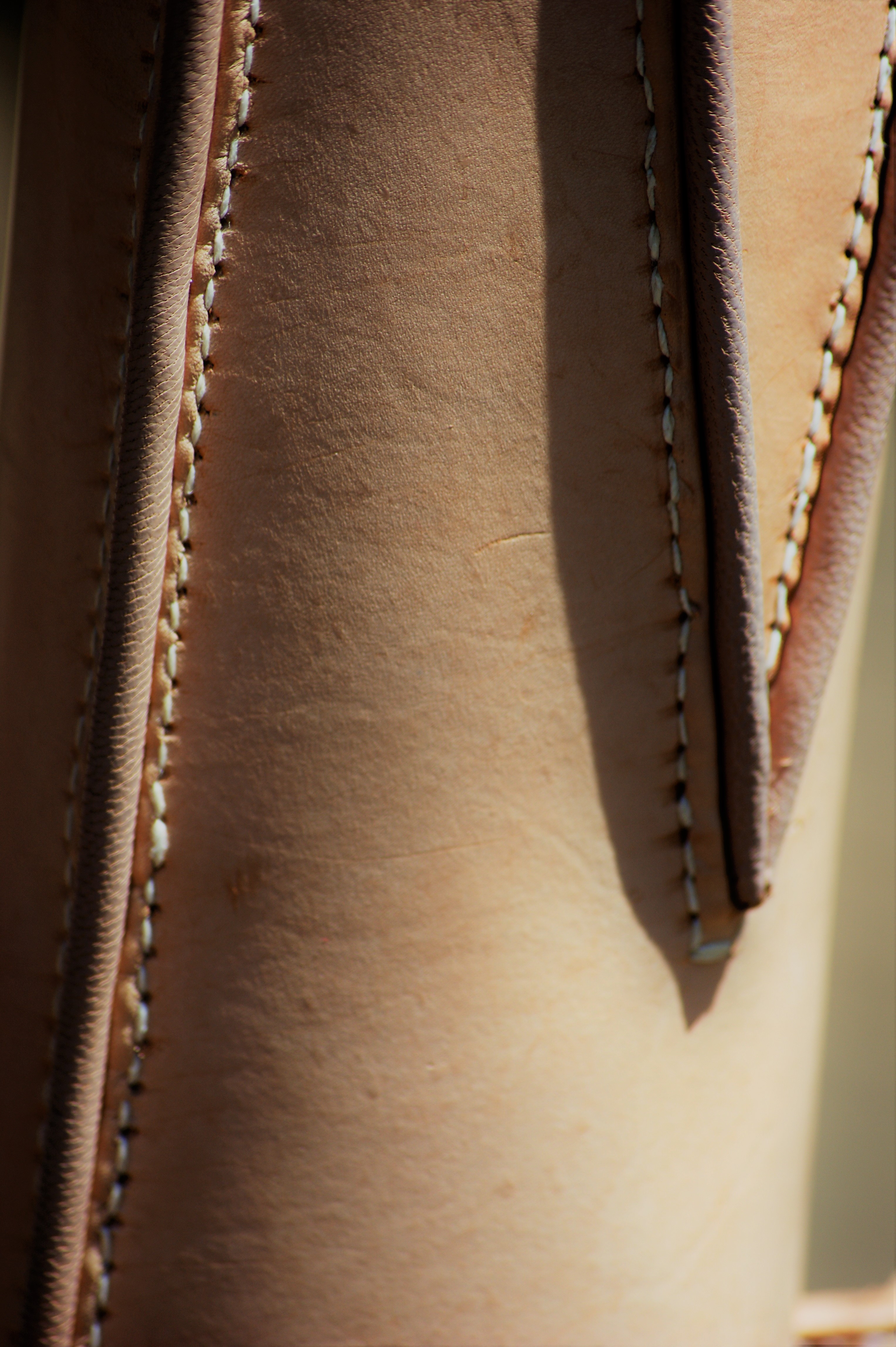
After. And there was much rejoicing.
For the last half inch (or metric half-inch, if you prefer), I decreased the height of the piping until it was flat with the seam at the top. This makes fitting the collar piece a little easier.
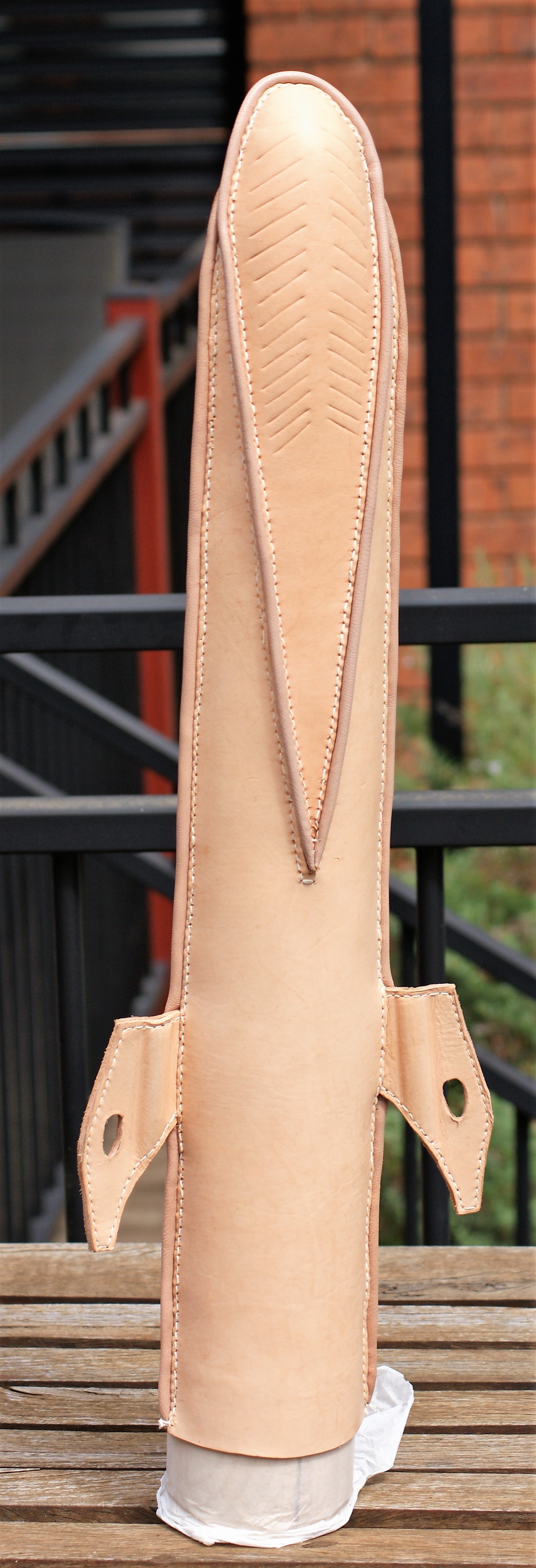
Finished main part of the quiver. The kitchen paper is visible, it made it much easier to get the wooden core out.
All the seams were dampened, and given a bit of a push or prod until I was satisfied with the way they sat.
I hit this with three good coats of dye and while that dried, made the mould for the collar.
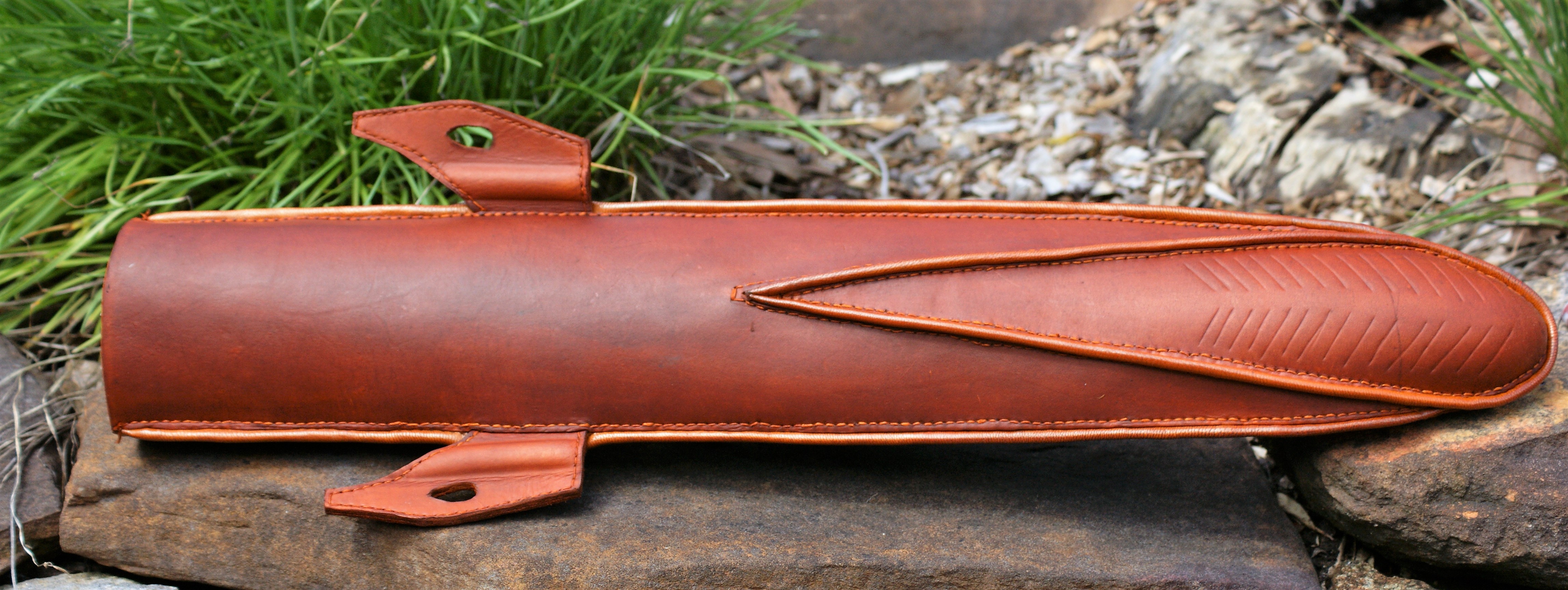
The mould was just a plank of radiata pine with the appropriate bits carved out and a ridge added to the the narrow bit near the top.
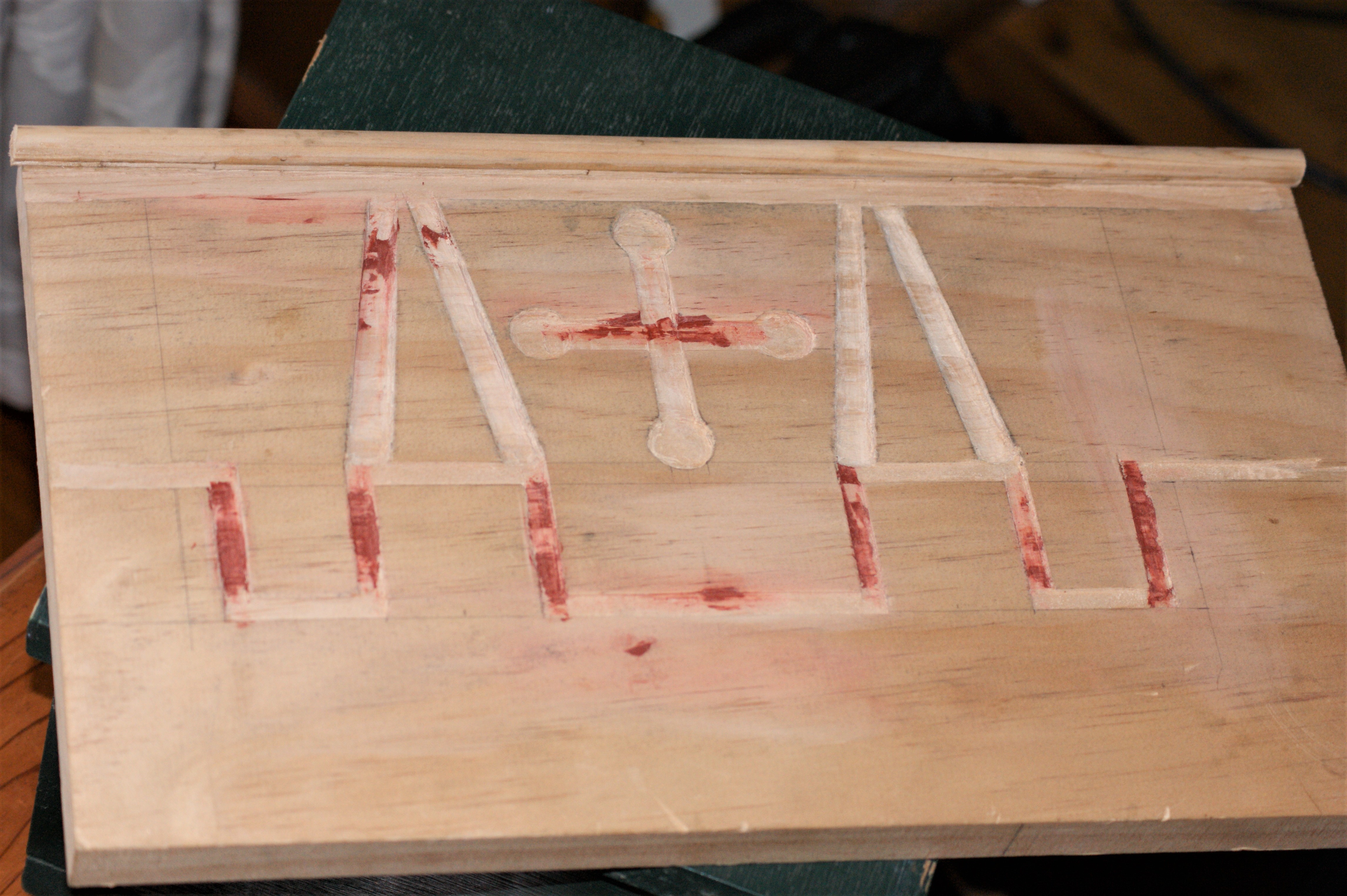
The red stuff is car putty, I had a few problems with tear-outs. Case the leather, lay it over the design, clamp in place and work through from the back with a bone or wooden folder.
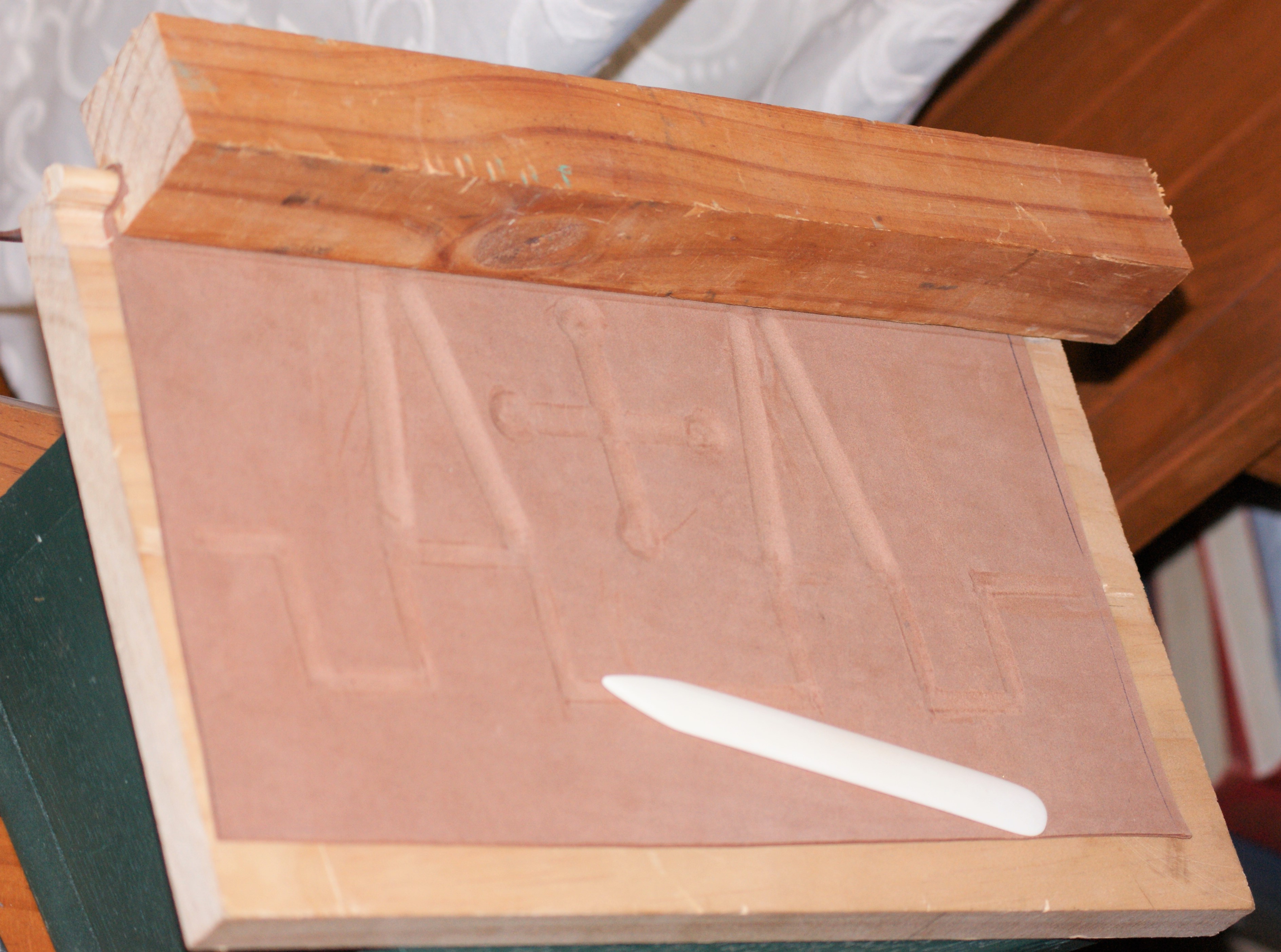
I’ve used this technique on costrels before. When the leather is dry, peel it off.

Cut off the spare bits, leaving enough to fold up along the bottom edge. The original has this edge folded and stitched. You may need to skive the edge, depending on how thick the leather is. Fold, stitch, do the back seam and put a roll of leather in the top ring. It comes out looking like this:
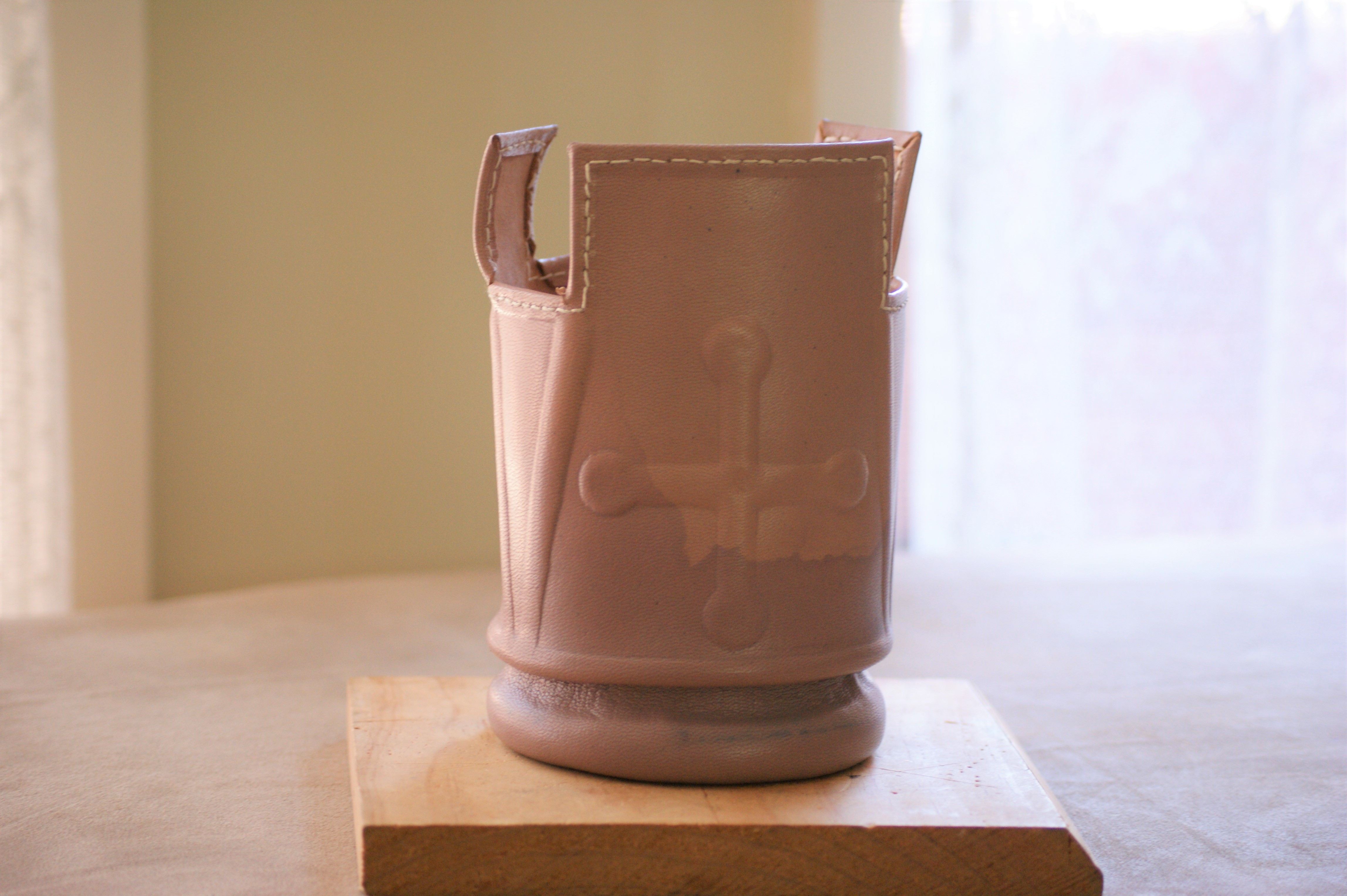
The narrow bit needs a little work, I had to rewet it and gently work it into shape.
Dye this bit next…
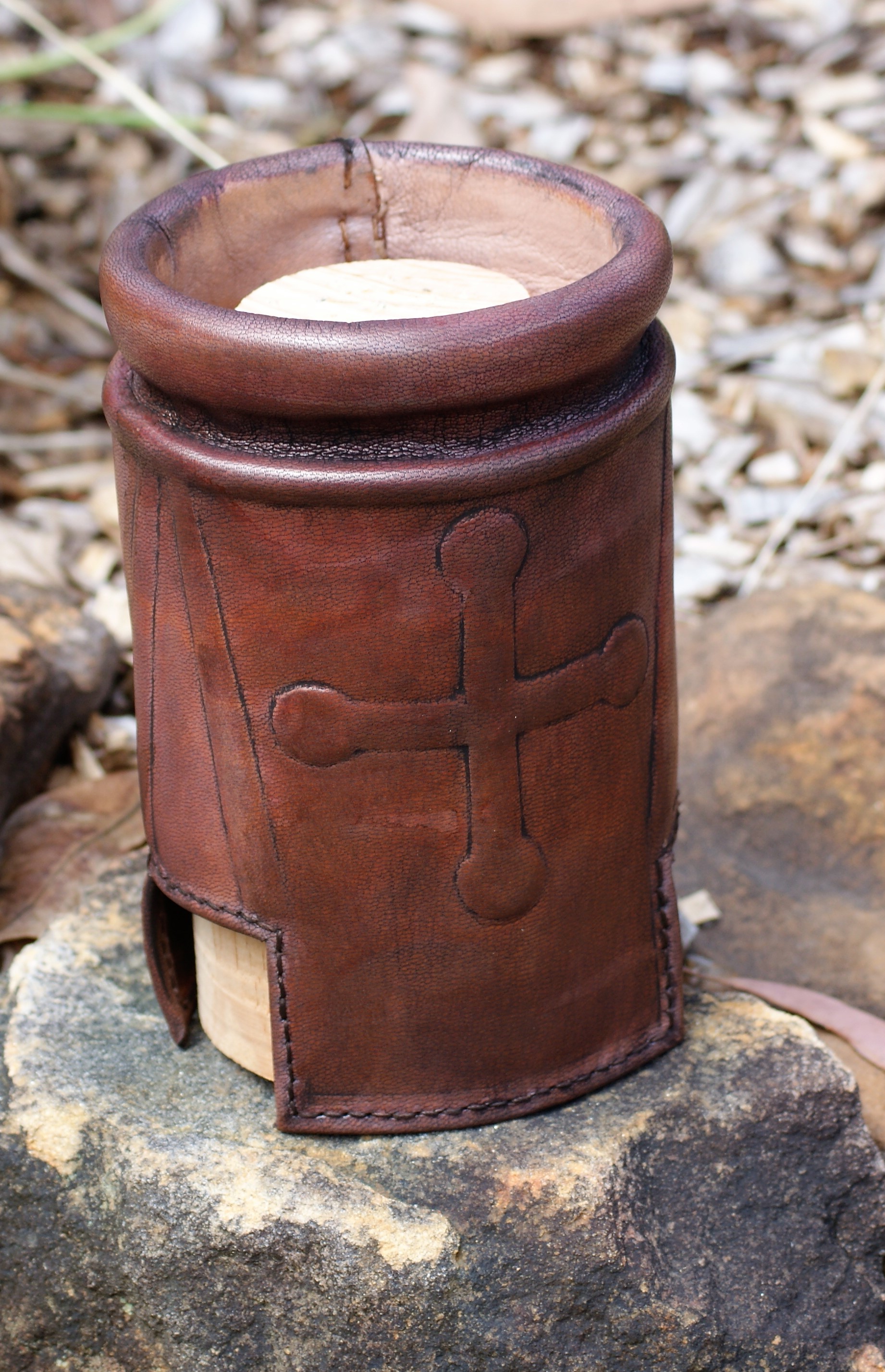
and discover that this piece of leather won’t take darker brown dye. I tried water-, spirit-, and oil-based dyes and none of them worked. I had to hurriedly make a new one from some different leather.
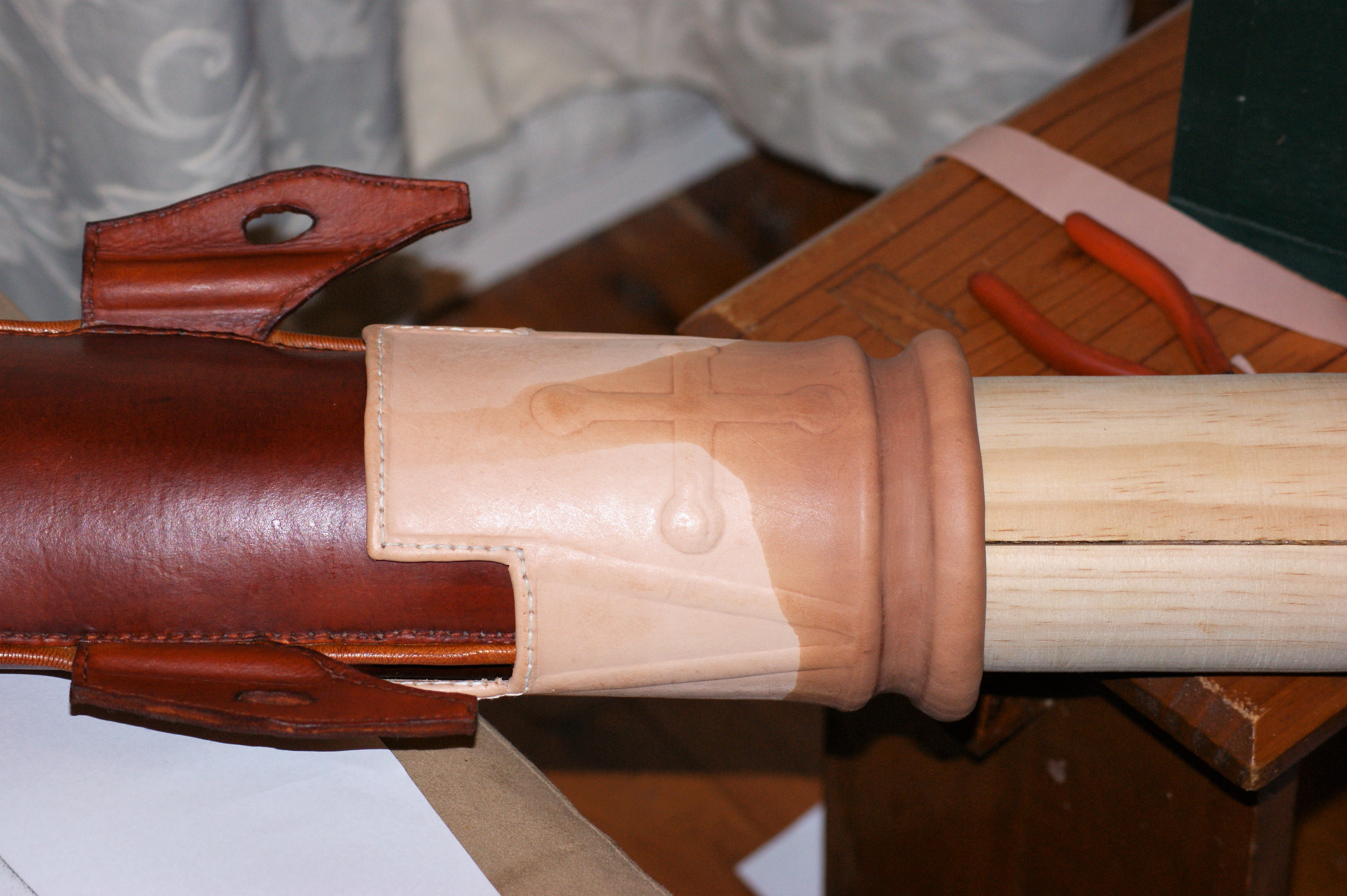
I think this one is better, anyway. It took the dye properly and I was able to do the seam that holds it all together. Just the hanging straps to go now.



















